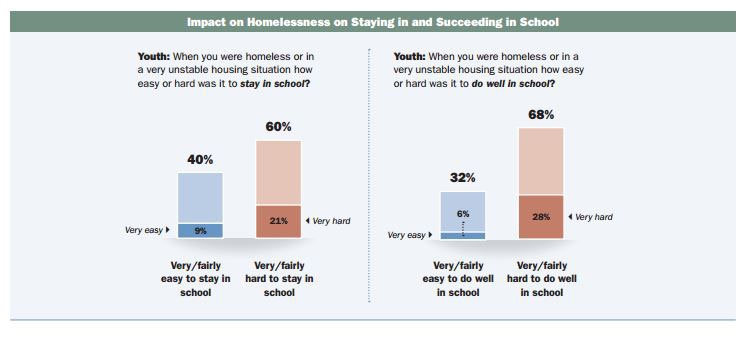
A recent report by Civic Enterprises and Hart Research Associates focuses on student homelessness and the effect that it has on the students in school and throughout their lives. This report follows an announcement by the National Center for Homeless Education that the number of homeless students in the United States has doubled in the past decade to 1.3 million in 2013-2014.
The researchers for this report conducted both qualitative and quantitative research, primarily in-depth interviews and surveys, in order to provide a full picture of the impact that homelessness has on children in school.
Dealing with insecure housing had obvious impacts the lives of children, with a large majority (82%) of the formerly homeless youth surveyed saying that this instability had a big impact on their overall lives, including nearly three-quarters (72%) who said that homelessness negatively impacted their ability to feel safe and secure. Among these respondents, 6 in 10 (60%) also said that it was hard to stay in school while they were homeless and nearly 7 in 10 (68%) said that even if they able to get to school, it was hard to succeed. Despite these challenges, two-thirds of homeless youth (67% of respondents) said that they were uncomfortable talking about their housing situation with their peers and teachers at school out of fear of being bullied or being separated from their families.
While there are programs in place to help homeless students, just 1 in 4 (25%) of the youth surveyed thought that their schools did a good job helping students find housing, and over half (58%) thought that their schools should have done more to help. Schools are often a source of stability for homeless youth during an otherwise chaotic time, so school libraries can help these students by providing safe and consistent spaces for studying or doing homework. Librarians can also support these students by making resources readily available that can connect students and their families to organizations that will help them find housing, transportation, and other support that will help students thrive in school.
You can find the full report here.
Note: This post is part of our series, “The LRS Number.” In this series, we highlight statistics that help tell the story of the 21st-century library.